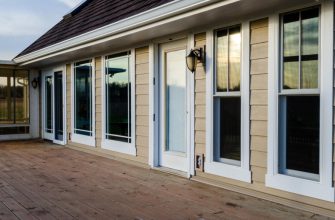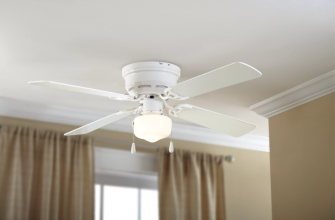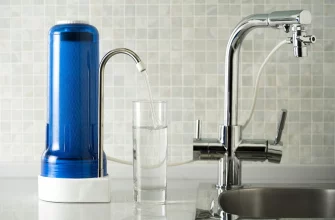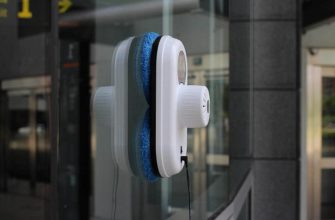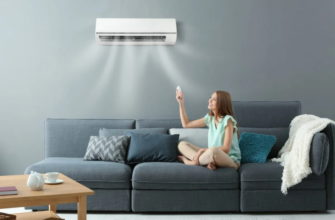Choosing the right light bulbs for your home or office can have a big impact on your energy usage, cost savings, and environmental footprint. With so many options on the market, from old-fashioned incandescents to cutting-edge LEDs, it can be challenging to figure out which bulb is the best choice for your specific lighting needs.
In this comprehensive guide, we will compare the different types of light bulbs available today. We will look at the key factors like brightness, lifespan, energy efficiency, and cost. We’ll also discuss proper usage and disposal of efficient bulbs. By the end, you’ll have all the information you need to make informed decisions about lighting your spaces effectively and efficiently.
- Importance of Choosing the Right Light Bulbs
- Types of Light Bulbs
- Incandescent Bulbs
- Technology and Features
- Energy Efficiency and Environmental Impact
- Compact Fluorescent Lamps (CFLs)
- Technology and Features
- Energy Efficiency and Environmental Impact
- Light Emitting Diodes (LEDs)
- Technology and Features
- Energy Efficiency and Environmental Impact
- Factors to Consider When Choosing Light Bulbs
- Brightness and
- Brightness and Color Temperature
- Lifespan and Durability
- Energy Efficiency and Cost
- Installing and Using Efficient Light Bulbs
- Compatibility with Fixtures
- Proper Usage and Maintenance
- Disposal and Recycling Considerations
- Comparing Energy Efficiency and Cost
- Calculating Energy Consumption and Cost Over Time
- Long-Term Savings and Return on Investment
- Environmental Impact and Sustainability
- Reduction of Carbon Footprint
- Resource Consumption and Waste Generation
- Making the Right Lighting Choice
- Considerations for Different Settings (e.g., Home, Office, Commercial)
- Recommendations for Specific Applications
- Final Thoughts on Selecting the Right Light Bulbs
Importance of Choosing the Right Light Bulbs
With lighting accounting for around 15% of an average household’s electricity use, choosing energy efficient light bulbs can lead to substantial cost savings over time. It also reduces environmental impact. Efficient bulbs like LEDs and CFLs use a fraction of the energy of traditional incandescent bulbs to produce the same amount of light.
Recent advancements in lighting technology have led to longer lasting and more efficient bulb options. Making the switch can save the average household between $40 and $80 per year. Over the 10+ year lifespan of newer bulbs, they can save up to $800 compared to incandescents. Their energy efficiency also leads to lower carbon emissions from power plants over time.
Beyond cost and sustainability factors, choosing the right light also provides the right brightness, color tone and visual comfort for each room. So there are many good reasons to learn about the differences between bulb types to make informed decisions about your lighting.
Types of Light Bulbs
Incandescent Bulbs
Technology and Features
Incandescent light bulbs are the traditional bulb type that has been used for over a century. They produce light by heating a tungsten filament with electric current until it glows. This inefficient process also generates a lot of waste heat, which is why these bulbs are hot to the touch.
Incandescents come in a range of shapes and sizes for various fixtures. Standard bulbs have an A19 shape while spot and floodlights are BR and PAR shapes. They are available in soft white (2700K), bright white (3000K–4100K) and daylight (5000K–6500K) color temperatures to match lighting needs.
While inexpensive to buy, they have a shorter lifespan of just 750-2,000 hours. So they require frequent replacing, which adds up over time. Most incandescent bulbs have been phased out by legislation due to high energy usage.
Energy Efficiency and Environmental Impact
Incandescent bulbs are extremely inefficient – only about 10% of the energy they use results in light, while the other 90% is turned into heat. This makes them much more energy intensive compared to efficient options.
An equivalent 60-watt incandescent that produces 800 lumens consumes 60 watts of power. Over the same lifespan, this single bulb can use up to $50 in electricity. Multiply by the number of bulbs in your home, and costs escalate rapidly.
All this wasted energy also has environmental consequences. The average incandescent bulb generates about 450kg of greenhouse gas emissions over its lifetime – 4 times more than an equivalent CFL. So making the switch reduces carbon footprint.
Compact Fluorescent Lamps (CFLs)
Technology and Features
CFL bulbs are energy efficient fluorescent tubes miniaturized to fit standard household fixtures. Inside the twisted glass tubes are gases that heat up and emit UV light when activated by electricity. The tube coating transforms the UV rays into visible light.
CFLs come in all the common shapes and sizes – A19, flood, spot, globe, candle. They provide the same brightness as incandescents at a fraction of the energy use and cost. Like fluorescent tubes, they have a slight delay in reaching full brightness when turned on.
The average lifespan of a CFL is 6,000-15,000 hours, lasting 6-15 times longer than old-fashioned incandescents. This significantly reduces the cost and waste of frequent bulb replacement.
Energy Efficiency and Environmental Impact
CFL bulbs use about 70% less energy than incandescent bulbs. A 13-15 watt CFL produces the same 800 lumens as a standard 60 watt incandescent. This energy efficiency also leads to lower electricity bills.
Over its life, a single CFL bulb can save over $40 in energy costs compared to an incandescent. It also lasts longer, saving the extra cost and materials of frequent replacement every year. Their efficiency leads to 75% less greenhouse gas emissions over the bulb lifetime as well.
However, CFLs do contain a very small amount of mercury as vapor inside the glass tubes. This is necessary for the fluorescent process to work. The miniscule mercury content makes disposal an environmental consideration.
Light Emitting Diodes (LEDs)
Technology and Features
LED bulbs are the latest in lighting technology. They work completely differently than traditional incandescent bulbs. Instead of heating a wire filament, LEDs pass electrons through a semiconductor to emit a colored light. No heat or UV rays are generated in the process.
LED bulbs now match the warm glow of incandescents while using a fraction of the energy. They turn on instantly at full brightness. The latest LEDs are available as A19, BR, PAR, MR16 spotlights, candelabra, globe, tube and more to fit most fixtures.
With exceptional durability and lifespan of 25,000-50,000 hours, LED bulbs can last for over a decade before needing replacement. This makes them extremely cost effective over time.
Energy Efficiency and Environmental Impact
LED bulbs consume up to 90% less energy than traditional incandescents. A standard 800 lumen LED bulb only uses between 6-12 watts of electricity. This exceptional efficiency slashes energy bills and carbon footprint.
Over 20+ years, a single LED bulb can save over $150 in energy costs compared to repeatedly replacing incandescent bulbs. Widespread household use could save the average home $1,000s over 20 years. Their efficiency also reduces landfill waste from bulb replacement.
LEDs are also eco-friendly – they are 100% mercury free and meet strict efficiency and environmental standards. Widespread LED adoption is projected to reduce global lighting electricity use by 53% by 2030.
Factors to Consider When Choosing Light Bulbs
Brightness and
Brightness and Color Temperature
When selecting light bulbs, consider the brightness level and light color that would work best in each room. Brightness is measured in lumens. Choose enough lumens to sufficiently light the space without glare or eyestrain.
Color temperature indicates how warm or cool the light appears, described in units called Kelvin (K). Lower Kelvin ratings like 2700K-3000K produce a warm, cozy light. Neutral white around 4000K is bright and energizing. Daylight colors over 5000K are crisp and ideal for tasks like reading.
For living rooms and bedrooms, choose soft white or warm light between 2700K-3000K. Kitchens and workspaces benefit from bright neutral white light between 3500-4000K. Cool daylight colors around 5000K-6500K are best for offices, workshops and other detail-oriented tasks.
Lifespan and Durability
Consider the lifespan rating when choosing light bulbs. Modern CFL and LED options are rated to last for years rather than months like old-fashioned incandescent bulbs. The longer they last, the fewer times you have to replace them – saving you money and hassle.
CFL bulbs last 6-15 times longer than equivalent incandescents. LEDs take durability even further, maintaining quality light output for up to 25-50 times longer before needing replacement. This exceptional lifespan makes LEDs extremely cost effective.
Also look at durability ratings like vibration/rough service ratings. LEDs in particular can withstand a lot of vibration, making them ideal for fixtures that get bumped or moved frequently. Durability also varies by housing material, with plastic bulbs being most prone to cracks and breakage.
Energy Efficiency and Cost
Pay close attention to the energy efficiency ratings when choosing light bulbs. Lumens indicate brightness, while watts indicate energy consumption. The most efficient bulbs produce the most lumens using the fewest watts. They save the most money by slashing electricity usage.
Standard 800 lumen incandescent bulbs rate at 60 watts. CFL options consume just 13-25 watts for the same brightness. LED versions are the most efficient at 6-12 watts. This exceptional efficiency makes LEDs the most energy and cost friendly bulb option currently available.
You can calculate yearly energy savings by multiplying hours of use by wattage difference between bulb types. Over 20+ year lifespans, LEDs can save $100+ over repeatedly replacing incandescents. Efficiency saves money and benefits the environment.
Installing and Using Efficient Light Bulbs
Compatibility with Fixtures
When switching bulb types, check that the new bulbs you choose are compatible with the light fixtures you plan to use them in. While CFLs and LEDs come in standard socket types, some fixtures have limitations.
CFLs and LEDs may not be compatible with dimmers, timers, motion detectors or photocells unless labeled accordingly. Always check package labeling. Use standard non-dimmable bulbs with these controls. CFLs also have some insulation requirements for fully enclosed recessed can fixtures.
Exceeding fixture wattage ratings can be unsafe. Choose lower wattage bulbs than the fixture rating to prevent overheating and hazards. Consult manufacturer guidelines about maximum wattages for different fixture types.
Proper Usage and Maintenance
To maximize efficient bulb lifespan and performance, follow proper usage guidelines. Choose suitable environments – most should not be used in wet or damp locations. Operate lights within specified voltage ranges. Position bulbs correctly – base down for most types.
Avoid frequently switching lights on and off which shortens lifespan. Instead use smart controls and timers. For fluorescent types, aim for consecutive burning hours for highest efficiency. Let bulbs cool before handling and clean gently with a soft cloth if needed.
Check packaging for any special maintenance. Some CFL and LED bulbs have replaceable batteries that let you keep the base for longer-term use. Follow all manufacturer instructions for
proper operation and care.
Disposal and Recycling Considerations
Responsible disposal of spent efficient bulbs is important to minimize environmental hazards. Both CFLs and LEDs require special handling at end of life unlike traditional incandescents.
CFLs contain a very small amount of mercury sealed within the glass tubing. Many municipalities have special recycling programs for CFL bulb drop-off to prevent mercury entering landfills. LEDs do not contain mercury but should still be recycled responsibly as e-waste.
Check for local recycling and disposal options when replacing efficient bulbs. Home improvement stores, waste management centers and environmental agencies provide recycling services in many areas. Responsible recycling and disposal protects the environment.
Comparing Energy Efficiency and Cost
Calculating Energy Consumption and Cost Over Time
When choosing light bulbs, consider long-term costs not just upfront purchase price. Electricity usage is the major expense over years of operation. More efficient bulbs reduce energy consumption, saving significant money over time.
A simple calculation shows savings potential: Take the wattage difference between an existing bulb and efficient alternative x 1500 annual hours of use x local electricity rate per kWh divided by 1000. The result estimates annual savings from switching.
For example, replacing a 60W incandescent with a 12W LED results in 48W reduced wattage. 48 x 1500 hours x $0.12/kWh / 1000 = $8.64 in annual savings. Over 20+ years lifespan the savings really add up.
Long-Term Savings and Return on Investment
While LEDs and CFLs have higher upfront costs, their exceptional energy efficiency pays back over time through electricity bill savings. Efficient bulbs often provide full return on investment in less than a year through reduced energy usage.
Over the 20-year average lifespan of an LED, a single bulb can save over $150 in energy costs compared to an incandescent. Plus you avoid the hassle of frequent bulb replacements every year. The long lifespan leads to substantial cumulative savings.
Widespread household usage can save the average home $100s per year and $1000s long-term. The energy efficiency savings continue to pay dividends over decades of use. So efficient lights are truly an investment that pays for itself.
Environmental Impact and Sustainability
Reduction of Carbon Footprint
Transitioning from energy-wasting incandescent bulbs to efficient CFL and LED lighting greatly reduces greenhouse gas emissions from power plants over time. This shrinks household and nationwide carbon footprints.
The EPA estimates that widespread LED adoption in the US can eliminate up to 600 billion pounds of greenhouse gases over 20 years – equivalent to taking 450 million cars off the road. Efficient lighting is a simple way to take action against climate change.
Even replacing just one 60W incandescent bulb with an LED reduces 450kg of CO2 emissions over the bulb’s lifespan. Imagine multiplying that by every light socket in your home and across cities – the impact is enormous.
Resource Consumption and Waste Generation
Incandescent bulbs burn out faster, consuming manufacturing resources and generating unnecessary waste. LEDs and CFLs have exceptionally long lifespans up to 25-50 times longer before replacement is needed.
The shorter 1-2 year average lifespan of incandescent bulbs leads to billions of bulbs ending up in landfills each year in the US alone. Long-lasting efficient bulbs reduce the material resources and environmental harm required to manufacture replacements.
Over 20+ years of use, a single LED bulb can avoid over 1,000 pounds of waste generated by replacing short-lived incandescent bulbs. The exceptional durability and lifespan of LEDs lead to substantial resource conservation over decades.
Making the Right Lighting Choice
Considerations for Different Settings (e.g., Home, Office, Commercial)
Lighting needs can vary widely depending on the room and application. Factors like size, ceiling height, task lighting needs, dimming requirements, and aesthetic preferences should guide bulb selection.
For home use, choose warm 2700K-3000K lighting with enough lumens for living rooms, bedrooms and dining areas. Opt for bright neutral white around 4000K for kitchens, bathrooms and workspaces. In offices, look for modular task lighting and high lumen output overhead fixtures with occupancy sensors.
Commercial settings like retail stores require high ceiling clearance, spotlighting or wall-wash lighting capabilities. Color accuracy, brightness uniformity and dimming compatibility are also important. Outdoor lighting must withstand weather and corrosion over years of use.
Consult manufacturer recommendations for system wattages, replacement cycles and compatibility with controls. Choosing the right bulbs for each application saves hassle down the road.
Recommendations for Specific Applications
Here are some specific lighting recommendations best suited for common situations:
- Living Rooms – Choose warm white 2700K LED or CFL floods for ambient lighting. Accent with directional spotlights.
- Kitchens – Use bright 4000K LEDs under cabinets and in overhead fixtures. Ensure adequate task lighting brightness.
- Offices – Look for modular LED task lamps, overhead troffers with 5000K-6500K color temperature and occupancy/vacancy sensors.
- Outdoors – Utilize LED floodlights and bulbs rated for wet/damp conditions. Use photocells or timers to control operation.
- Retail – Opt for adjustable track lighting or spotlights to highlight merchandise. Ensure adequate ceiling clearance.
- Artwork – Use narrow-beam LED spotlights with appropriate lumens and color accuracy (90+ CRI) for illuminating paintings without glare.
Consulting lighting design experts can help identify the perfect fixtures and bulbs tailored to your unique needs and preferences.
Final Thoughts on Selecting the Right Light Bulbs
With energy efficiency standards phasing out wasteful lighting, LED and CFL bulb technology offers exceptional durability, lifespan and electricity savings compared to traditional options. The environment and your wallet will thank you.
Evaluate your lighting requirements in terms of brightness, color temperature, compatibility constraints and operating hours. Compare bulb types in terms of upfront costs versus long term energy savings and lifespan. Doing the math shows how efficient bulbs pay for themselves over years of use.
Responsible recycling and disposal of spent bulbs also minimizes environmental impact over decades. So it pays to make informed lighting decisions for each application. As the most sustainable and economical lighting solution available, LEDs are becoming the new lighting standard across homes and commercial spaces.



